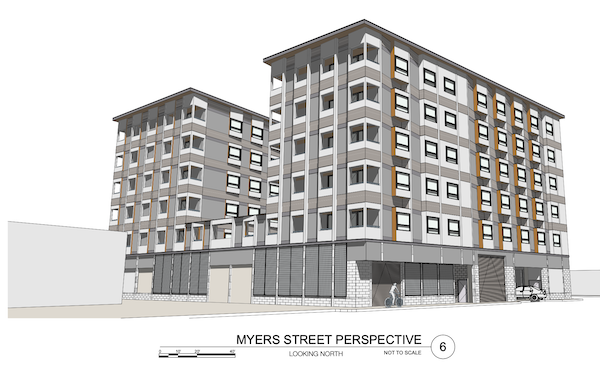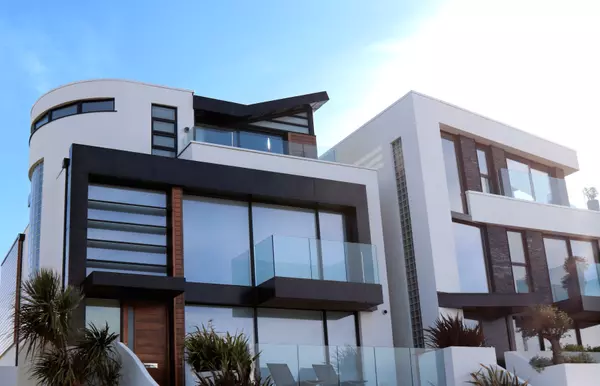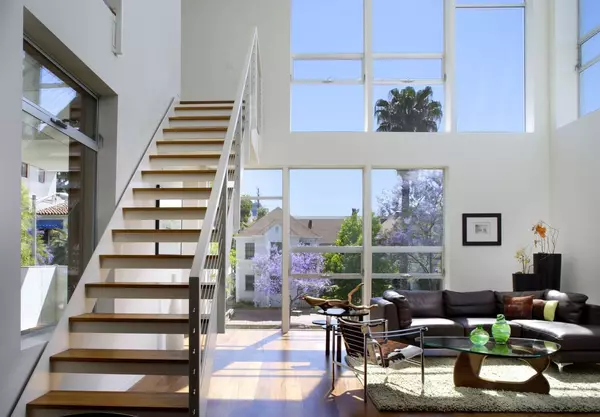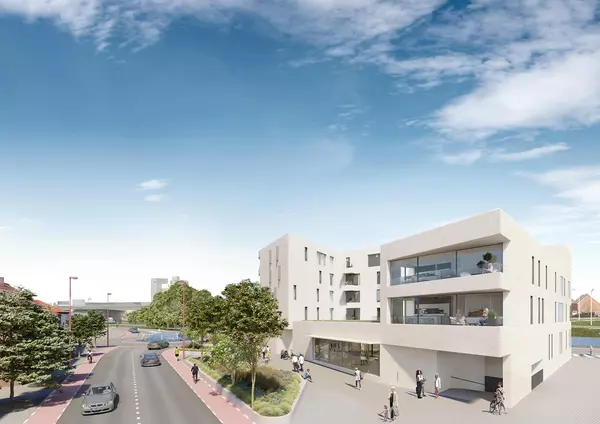Lawsuits seek to force sale of stalled ‘co-housing’ development site on Arthur Ashe Blvd.
The site of a stalled development on Arthur Ashe Boulevard could be sold in a court-ordered auction if a handful of recently filed legal challenges are successful.
At least three lawsuits were filed in recent weeks by contractors who claim they’re owed millions of dollars for their work on D.C.-based Outlier Realty Capital’s unfinished 150-room “co-housing” project at 1101 N. Arthur Ashe Blvd.
Filed by general contractor Breeden Construction, electrician Tribble Electric, and materials firm White Cap Supply, the cases each name Outlier as a defendant and ask the court to force a sale of the project site to satisfy liens that were previously filed by the contractors.
In the works since 2020, the development was to bring nearly 150 bedrooms in 29 apartments in a co-housing concept in which tenants have their own bedroom and bathroom, while sharing common areas like kitchens and living rooms.
Outlier broke ground at the site about a year ago, but work halted last summer, leading the project’s contractors to file a series of liens against the property. As of press time, only concrete columns have been built on the property and have sat untouched for months, jutting out from the ground with rebar poking out from their tops.
With many of the liens still outstanding, the contractors have now filed the lawsuits seeking to enforce the liens.
Breeden, in its Dec. 27 suit in Richmond Circuit Court, claims it’s owed around $2.3 million for its work on the development and that “(Outlier has) failed and refused to make payment to Breeden for such labor and materials.”
The alleged non-payment of Breeden by Outlier has sent a ripple effect throughout the other related court filings. Because Breeden was the general contractor on the project, it was in charge of hiring the other subcontractors.
On Jan. 30 Georgia-based White Cap filed a suit against both Breeden and Outlier, among others, seeking to enforce a lien. White Cap claims it’s owed around $80,000 for building materials like concrete, rebar and lumber that it supplied for the development.
Just over a week later on Feb. 7, Tribble Electric filed its own lawsuit seeking to enforce its lien. Tribble, a local firm, claims Breeden owes it about $87,000 for electrical work and supplies. Tribble’s lawsuit notes that, “work was stopped due to non-payment by (Outlier),” and also alleges unjust enrichment against Outlier.
Also named as defendants in each lawsuit is the development’s lender, Maryland-based EagleBank and trustees Kenneth Gray and Timothy Annett.
Tribble, through its attorney Christopher Hill of The Law Office of Christopher G. Hill, declined to comment. White Cap and EagleBank’s attorneys did not respond to requests for comment, nor did Outlier managing partner Peter Stuart.
Buckley Warden is a local attorney at ThompsonMcMullan with 15 years of experience in construction industry litigation. He’s not representing any of the parties in the Outlier cases, but explained how such lawsuits generally work.
Warden said under Virginia law a party that files a lien has six months to “perfect” the lien by filing a lawsuit to enforce it.
“The lien gives you collateral for you to actually be paid whatever it is that you are owed,” Warden said. “(But) you will lose that lien right if you do not file that lawsuit within six months of filing the lien.”
Even though the general contractor, subcontractors and suppliers name one another in their suits, Warden said it ultimately leads back to the property owner who started the ripple effect by not paying the general contractor and has to deal with clearing the liens.
“The lien attaches to the real estate. That’s why it’s so powerful as a tool,” Warden said.
Oftentimes after a lien is filed, the parties involved will reach a settlement agreement that includes having the liens satisfied, clearing the property’s title. Warden said it’s common for settlement negotiations to continue even after lawsuits to enforce a lien are filed. He said subcontractors and contractors aren’t always interested in litigating cases like these.
“A lot of these people, I suspect with a project that size, are not actively pursuing the litigation. Maybe some of them are: lawyers are different, and they have different approaches,” Warden said.
“The way I would approach it is you file to enforce your lien so you keep your lien right. That doesn’t mean you stop negotiating, or that you necessarily spend a bunch of money on any kind of discovery or litigation.…The last thing that most plumbers, electricians, carpenters, painters, want to do is spend a bunch of money on lawyers.”
If the lawsuits are successful and the court orders that the property be sold, Warden said it would be sold at auction, similar to a foreclosure auction.
Even though that outcome would generate some money that would be divvied up amongst the lien holders, Warden said he thinks auctions are “a bad outcome for everyone involved,” because it would likely sell for less than it would on the open market.
Outlier bought the land for $1.2 million in 2021. The 0.3-acre parcel was most recent assessed by the city at $1.4 million.
“You don’t want it sold on the courthouse steps. You won’t get as much for it,” he said. “Just like you don’t really want the court selling your home. You want your real estate agent to sell your home, you want it to be advertised and you want people to come look at it.”
That begs the question of what a potential buyer might be able to do with a partially built project.
Walter Parks, whose namesake architecture firm designed the Outlier building, said he thinks the pause in construction would prevent the planned co-housing building from being built, and that if someone wanted to build something different on the site, the existing columns could be retained.
“If one could work within the footprint, you could build something different. You’d keep the footprint of the building basically, and you could rework what’s inside of it,” Parks said.
“I think it would be a challenge, but one of the things that we’ve done for years is renovate old buildings. You’re given a shell and you have to design a building inside of it. This is kind of like that. You’d have a given foundation plan and footprint, and you’d have to design a building around it.”
No hearings have been set in any of the lawsuits as of press time.
The post Lawsuits seek to force sale of stalled ‘co-housing’ development site on Arthur Ashe Blvd. appeared first on Richmond BizSense.
Recent Posts
GET MORE INFORMATION

Agent | License ID: 0225209440










